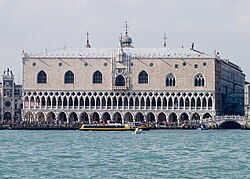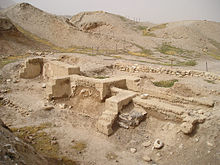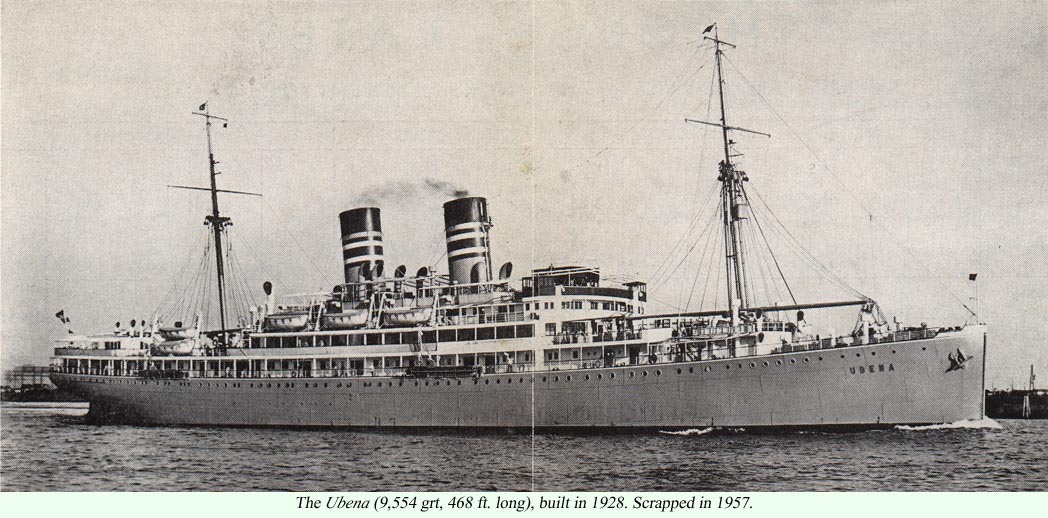View Larger Map
February 25 I caught the train for Jerusalem at 6 p.m. I curled up in a blanket I had with me. The country got more and more mountainous after we crossed the Suez Canal. Went through a real sandstorm and then into beautiful orange growing country and through mountains to Jerusalem. Cook’s dragoman met me at the train the morning of February 26th and took me by roadway cut through big wall when Kaiser Wilhelm of Germany visited there in 1898.
Clarence on Donkey
Pool of Siloam (near)
Village of Silwan (Siloam)
Junction of Tyropean and Kidron Valleys
Christ anointed the blind man's eyes, presumably near here.
January 1932
Mainly Yemen Jews (Living in Islam since Mohammedan times and speak Arabic as well as Jewish.)
Clarence on Donkey
Valley of Kidron
Tomb of Absolam
Graeco-Roman style
Associated with David's son since 16th Century.
Tomb of Absolam,
Wikipedia
That morning we visited the Church of the Holy Sepulcher, supposedly the site of both Golgotha and crucifixion and entombment, all according to Queen Helena, mother of Constantine, first Christian Emperor of Rome. This consists of several interconnected dark churches with many candles and bickering clergy of Roman and Greek Catholics, Armenian Catholics, and Copts (Egyptian Christians). This is all now inside city wall but was outside at the time of the Savior. Present churches are described as a barbarous reconstruction of medieval structures razed by fire in 1808. We proceeded along the Via Dolorosa, supposedly the road which Christ trod, but actually about 30 feet higher since one city has been built on ruins of the other successively here. Came to the site presumedly of all where Pilate delivered judgment.
Clarence
El 'Azariyeh (Bethany)
Supposed house of Simon the Leper where women anointed Christ with ointment
In the afternoon motored to Bethlehem, 5 ½ miles south and a little east of Jerusalem. Great fortress-like buildings comprise the Church of the Nativity with three contiguous convents maintained by Latin, Greek Orthodox, and Armenian churches. The traditional site of the nativity is a cave beneath the choir of the church.
I visited Dome of the Rock on Mt. Moriah February 29th. Byzantine (Greek) architects built the present domed structure in about the seventh century for Arabs controlling the area. A sum equal to about the revenues of Egypt for several years was appropriated. The dome is very beautiful, startling in design and gorgeous in coloring. Stained glass windows in cement frames in beautiful arches with blue and white tile. The tiles were added by Suleiman the Magnificent in 1561. Passages from the Koran, white on a blue enamel background are prominent. Guide says some of the supposed 17th Century windows were put there after a 1927 earthquake. Very dim on the inside, but soon fine coloring of the interior begins to penetrate. Great rough rock is surrounded by a fine grille of French wrought iron. Rock is supposed to be where Melchizedek offered sacrifice, where Abraham was about to offer up Isaac, and where Mohammed was translated to heaven on back of his white steed. It is the spot where the ark of the covenant stood. Through a pointed door we descended 11 steps to the grotto where blood from sacrifices was supposed to come down. Solomon’s stables were below gratings. At Wailing Wall, remains of the original wall of Herod’s Temple, many Jews were praying and were crying.

Looking across Kidron to East walls of Jerusalem and Haran enclosure (Solomon's temple) from solid "Tomb" of Zachariah.
Tomb of Zachariah, Wikipedia
March 1, I went up Mt. of Olives across the valley to the east. On the way I stopped at the Garden of Gethsemane and saw really old olive trees where Christ supposedly prayed and sweat drops of blood. I then went to the summit of the Mount of Olives and climbed 214 steps to the top of a tower from which we could see the great vista through a rainstorm.
Clarence
Minaret near Chapel of Ascension
Mt. of Olives
February 1932
Also I went to Gordon’s Calvary and Golgotha as accepted by the Church of England. This is outside the present city wall. Later I climbed the city wall and walked around the city. King David Hotel and modern city are outside the city walls.
Guide at excavations of ancient (Biblical) city of Jericho.
Also I drove over surfaced highway through Wilderness of Judea past ruins of Inn of the Good Samaritan to Jericho where I had lunch. Went south to the Dead Sea, where I took a swim.
Clarence
Dead Sea
Left Jerusalem by car early morning of March 5. Stopped at a place where Jesus supposedly conversed with the Samaritan woman at the well. Had lunch at Nazareth and descended from the hills through Cana to blue Lake Galilee which is 622 feet below sea level. Nearby Mt. Hermon with snow is 9,000 feet above sea level. Stayed overnight at a good hotel along the lake. Took a half hour’s boat ride on the lake which still yields lots of fish. It takes a little more than half an hour to dive from Nazareth to modern port of Haifa. Mt. Carmel is on point at end of great curve of Bay of Acre. Boarded the Italia a small Italian ship, traveling 3rd class distincta (special). Wisconsin couple who had traveled on the “Ubena” first class and had stayed at the Grand New Hotel with me in Jerusalem were aboard.





















































